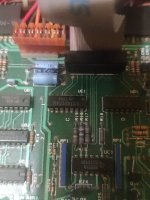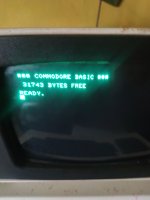Desperado
Veteran Member
- Joined
- Nov 25, 2017
- Messages
- 6,827
I measures UC1 here in picture:Sorry, yes, the main digital logic board.
The reason I asked you to check the stepper signals on the analogue board is that they originate from the device that is covered by your little emulator board. I remembered this time!
Dave


